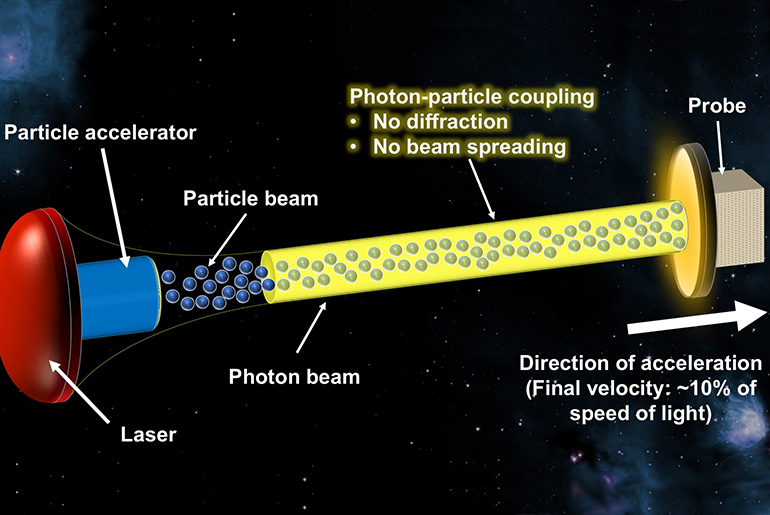NASA to study plan to combine laser and particle beams for space travel

Image: College of Engineering
A new technology combining a laser beam and a particle beam for interstellar propulsion could pave the way for space exploration into the vast corners of our universe. This is the focus of PROCSIMA, a new research proposal by Chris Limbach and Ken Hara, assistant professors in the Department of Aerospace Engineering.
NASA has chosen the proposal “PROCSIMA: Diffractionless Beam Propulsion for Breakthrough Interstellar Missions,” for the 2018 NASA Innovative Advanced Concepts (NIAC) phase 1 study. PROCSIMA stands for Photon-paRticle Optically Coupled Soliton Interstellar Mission Accelerator, and is meant to evoke the idea that interstellar travel is not so far away.
In this study, Limbach and Hara propose a new and innovative beamed-propulsion architecture that could enable an interstellar mission to Proxima Centauri with a 42-year cruise duration at 10 percent the speed of light.
Proxima Centauri is the nearest known star to the sun, with Proxima b, a planet orbiting the star at a distance of 7.5 million km. The mission of the research is to create an extraordinarily long-range beam of light and matter that can propel a one kilogram probe to complete a flyby around Proxima b. There is great interest in studying this planet, as it is a prime candidate for visual observation because of its proximity to Earth and because Proxima b orbits in the habitable zone where liquid water may exist.
For half a century, researchers around the globe have been studying laser-beamed propulsion technologies for interstellar travel. In this concept, thrust is generated by the reflection of light off the spacecraft. Unlike conventional rockets, spacecraft accelerated by beams of light or matter do not require their own propellant or propulsion energy source, enabling incredibly high final velocity. The disadvantage of such concepts is that as the spacecraft gets farther away, the beams spread out, or diffracts, into the vacuum of space. This results in less thrust over time as the beam pushes less and less effectively.
Limbach and Hara are looking at a revolutionary way to overcome this fundamental problem by combining the light beam with a particle beam that simultaneously reduces the spreading effects are simultaneously reduced for both beams.

